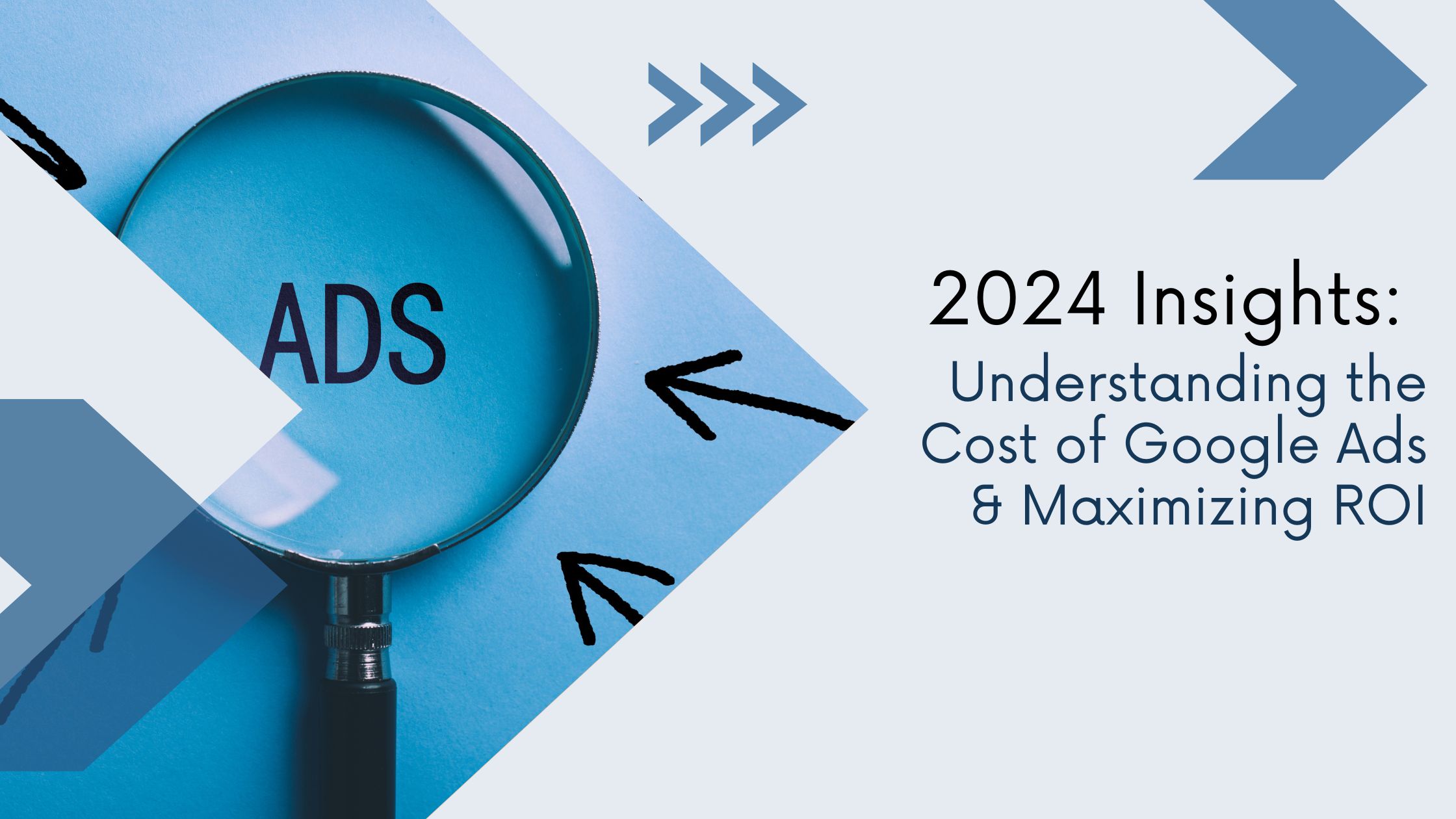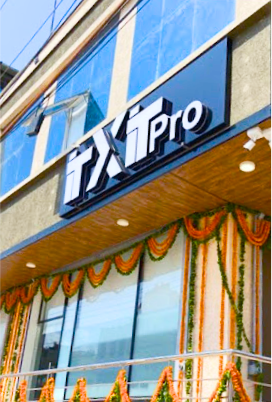Introduction

Mostly, it is a very dynamic platform, with the charges changing now and then. Generally, the estimated charges are every month, ranging from $100 to $10,000 in 2025. Usually, a typical charge per click ranges between $0.11 and $0.50, and that per a thousand impressions charges between $0.51 and $1000. However, these are no longer fixed numbers and shall vary depending on various aspects, such as competitiveness in the sector and campaign targeting factors, among others.
This all-inclusive Google Ads pricing guide will help you learn more about Google Ads pricing and how you can use your ad spend effectively to meet your marketing objectives. Follow this post to remember how you can reduce your ad spend and improve your ad copy, the way you should target, and other campaign performance metrics you need to measure. Done correctly, Google Ads can make a huge difference in what your business has to show for itself.
What Is a PPC Service and How Can It Help Manage Google Ads Campaigns?
A PPC service is a specialized offering where experts manage your pay-per-click advertising (like Google Ads) on your behalf. It covers keyword research, campaign setup, ad creation, bid management, and ongoing optimization. By using a PPC service, you tap into the skills of professionals who know how to write high-converting ad copy, set effective bids, and track performance metrics. For example, our PPC service provides:
- Targeted keyword planning: We find the most relevant and cost-effective keywords for your business.
- Ad creation and testing: Our team writes multiple ad variations and tests them to improve click-through and conversion rates.
- Bid and budget management: We set bids to meet your cost-per-acquisition goals and adjust daily as market conditions change.
- Reporting and insights: You receive clear reports on impressions, clicks, conversions, and ROI, so you understand where your budget is going.Overall, a professional PPC service ensures your Google Ads budget is used efficiently and delivers the best possible ROI.
Pricing Factors
Google Ads, the advertisement platform owned by Google, bases its model on pay-per-click advertising. Advertisers bid on specific keyword phrases relevant to Google users in various locations to allow their ads to appear. The following factors will influence how much it will cost one to run ads on Google in 2025:
- Keyword Competition: Keywords, being more competitive, significantly push up their cost. Highly competitive keywords demand higher bids to achieve high ranking in Search Engine Results Pages’ listings.
- Quality Score: Google gives every keyword a Quality Score reliant on the ad’s relevance, the experience on the landing page, and the ad’s historical performance. Keywords that have higher quality scores often result in lower costs-per-click.
- Ad Position: The top or first position has the greatest cost; next to it is the third or fourth position. The ones at the bottom of the page have the lowest cost.
- Targeting Options: If selected wrongly, the place you choose to reach people, the device you use to reach your audience, and whom you want to reach may increase the cost. For example, target customers in different locations or demographics may have different CPCs.
- Ad Format: Each ad format (e.g., text ads, display ads, video ads) may have different expenses.
- Seasonality: Some businesses, like the wedding industry, have peak seasons. Some people think this determines keyword competition and cost-per-click.
- Ad Extensions: Many people believe that using ad extensions like callouts, site links, or structured snippets can increase the ad’s visibility and decrease the cost-per-click.
How does Google Ads determine your CPC?
Now, let’s get into the three steps of determining the cost per click of a Google Ad.
How relevant are the keywords? Google Ads mostly works on a keyword targeting system. The relevance of the keyword to the users’ search determines the CPC. Better the relevancy of the chosen keywords to a user’s search queries, lower the CPC. Google rewards advertisers who provide relevant ad experiences to its users. Your relevance determines your cost.
- Quality score:Google evaluates the relevance and quality of your ads, keywords, and landing pages and assigns a quality score to them. The quality score is determined by click-through rate, ad relevance, and landing page experience. If your ads achieve a higher quality score, then your CPC is likely to lower and better ad positions.
- Bid Amount:Bid amount is another factor affecting ad position, CPC, and Quality Score. The amount advertisers are willing to pay for the ad to be clicked also plays a crucial role. The maximum amount you will pay for a click on your ad is the maximum CPC bid. However, the actual CPC can be lower than the maximum bid. It depends on factors like ad rank and competition among other businesses.
- Ad rank:Ad rank plays a very important role in determining the positions of your ad on Google’s results page. The ad rank is calculated based on your ad’s quality score and bid amount. The higher the Ad Rank, the higher the probability of your ad being displayed at prominent positions on the search result page. Advertisers with higher ad ranks will also have better visibility than those paying higher CPCs.
- Competitive Landscape:The landscape of your keyword and your industry also plays an important role in determining the CPCs. The more advertisers competing for the same industry and keyword, the higher the CPC. Therefore, any advertiser needs to measure the competitiveness in their industry and adjust their bidding strategies accordingly to reduce the CPCs.
Google Ads Pricing Basics
- Cost-Per-Click (CPC): Cost-Per-Click (CPC) is a common Google Ads pricing model. The perception of CPC advertising is that advertisers pay the publisher each time a user clicks on the ad. The CPC price of the ad will vary based on how competitive the keyword is, the quality of the advertisement, and the chosen pricing strategy. The CPC landscape 2025 is becoming extremely competitive, leading to a high average CPC.
- Quality Score: A Quality Score is a metric used by Google to determine how the keywords in a PPC service ad campaign perform. It helps to see whether the ads are getting clicked and a good return for the money the ad spend is paying. Google gives each keyword a score on a scale of 1 to 10, with a top score of 10. A high-quality score means lower cost-per-click. A high-quality score is rewarded with a better ad position on the search engine results page. Companies with high-quality scores often have a 50% lower cost-per-click than low-quality ones.
- Ad Position: Ad position is the most impactful factor in terms of costs and visibility. While generally, such an ad tends to have a higher number of clicks, it also generally has a higher CPC, meaning it is a balance between ad position and CPC in gaining a good ROI.
- Keyword Selection: The right keywords are necessary to make campaigns effective and, at the same time, not too costly within Google Ads. Though long-tail keywords are less competitive, they often bring a better return with lower CPC compared to broad keywords. Thorough keyword research and good use of match types can help bring down costs while improving ROI.
How Google Ads Budgeting Works
Google Ads offers many budgeting options for advertisers:
- Daily Budgets: Advertisers can set the maximum they want to spend within a single day. Advertisements are stopped from being scheduled when a daily budget is reached to be planned for the next day. Alternatively, advertisers could set a budget for each campaign, allowing greater control and granularity in expenditure.
- Shared Budgets: Dynamically allocate the spending across several campaigns with shared budgets.
- Bid Strategies: Google Ads provides automated bid strategies that either adjust the bids to maximize clicks and conversions or target a specific ROAS.
Worried about your Google Ads budget?
Although most companies spend an average of $9000 to $10,000 a month on Google Ads, the cost of Google Ads cannot be affixed to one particular sum. And that’s okay.
You can spend as much money as you want on Google Ads. The right amount to spend on Google Ads for your business will be determined by ad performance, industry, goals, and the tools you decide to use, among others.
Whichever way you choose, Google Ads are a great way to advertise for just about any business. The point is that you lose a portion of your budget in a failed test campaign.
But when you realise what is in it for you with a successful Google Ads campaign, you will wonder why you have not done it already. Our best PPC agency for Google Ads covers you if you need help building your Google Ads budget or campaign.
Contact us online or call ITXITPro Digital marketing solutions company to speak with a senior strategist about the cost of your business reaching customers with Google Ads.
How Can Estimate and Plan Google Ads Budget?
To plan your Google Ads spend, start by defining clear goals (such as sales, leads, or website traffic). Use Google’s Keyword Planner to estimate the CPC for your target keywords in your target locations. Consider your expected conversion rate to forecast how much ad spend you’ll need to reach your goals. As a reference, a 2025 survey found that many businesses spend between $100 and $10,000 per month on Google Ads, depending on company size and industry. Begin with a test budget to collect performance data before scaling up.
- Start small and scale: Begin with a modest monthly budget (for example, a few hundred dollars) to gather data.
- Use forecasts: Apply the Keyword Planner’s CPC estimates and your expected conversion rate to predict outcomes.
- Monitor and adjust: After a couple of weeks, review your actual cost per conversion. Increase your budget for campaigns that deliver strong ROI, and reallocate or pause those that underperform.
How Do Calculate and Improve ROI on Google Ads?
ROI (Return on Investment) is calculated by dividing your net profit from Google Ads by the total ad spend, often expressed as a percentage. For example, if you spend $1,000 on ads and earn $4,000 in revenue, your ROI is 300%. Google reports that the average ROI on Google Ads is around 800% (about $8 for every $1 spent), though your results will vary. To improve ROI, focus on both raising revenue and lowering wasted spend:
- Track conversions: Set up conversion tracking so you know which clicks lead to sales or leads.
- Optimize campaigns: Shift budget towards high-performing keywords and campaigns. Use negative keywords to block irrelevant traffic.
- Boost Quality Score: Improve ad relevance and landing page experience; higher Quality Scores can lower your CPC.
- Improve conversion rate: Test and optimize your landing pages and ad copy. Even small gains in conversion rates can significantly increase ROI.
Our SEM service emphasizes continuous analysis of ROI and making data-driven adjustments so your ad spend delivers the highest return.
How can I maximize ROI on my Google Ads campaigns?
Maximizing ROI requires a strategic, ongoing approach. Practical tips include:
Target the right keywords: Use a mix of broad, phrase, and exact match to reach qualified prospects. Regularly refine your negative keyword list to avoid wasted spend.
- Improve ad quality: Craft compelling ad copy with clear calls to action and ensure ads match the user’s search intent. Higher Quality Score often means lower CPCs and better ad positions.
- Use smart bidding strategies: Automated bidding like Target ROAS or Maximize Conversions can optimize bids for higher ROI, but monitor them closely and set realistic targets.
- Segment campaigns effectively: Separate campaigns or ad groups by theme, audience, or device to control budgets and bids more precisely. For example, create different campaigns for mobile users vs. desktop users.
- Leverage ad extensions: Use sitelinks, callouts, and other ad extensions to make your ads more prominent and improve CTR without extra cost.
- Continuously analyze and iterate: Regularly review performance metrics (CTR, Conversion Rate, CPA). Pause or adjust underperforming ads and scale up those that work. Use A/B testing to refine ads and landing pages.A reliable SEM or PPC service will handle these optimizations continuously, freeing you to focus on your overall marketing strategy.
FAQS
What factors determine the cost of Google Ads?
Google Ads costs are driven by a competitive auction system. Key factors include your industry (some industries like legal or insurance have higher bids), the keywords you target, and your Quality Score (which measures ad relevance and landing page experience). Location targeting, device targeting, and time-of-day scheduling can also raise or lower your cost-per-click (CPC). For example, WebFX reports most businesses pay around $0.11–$0.50 per click on average, but in highly competitive fields it can be much higher. In industries like insurance or finance, keywords often cost tens of dollars per click or more.
Should I hire a professional SEM agency to manage my Google Ads?
Yes – hiring a professional search engine marketing agency can significantly improve your Google Ads performance. Running Google Ads effectively requires constant monitoring, testing, and tuning. An experienced agency brings:
- Deep expertise: Agencies have managed dozens or hundreds of campaigns and know best practices, saving you from costly trial and error.
- Advanced tools: They use sophisticated analytics and management tools to track performance and optimize bids more effectively than manual methods.
- Time savings: Managing campaigns is time-intensive. A dedicated agency frees you to focus on other business priorities.
- Scalability: As your business grows, an agency can quickly scale your campaigns and budgets without missing a beat.
For example, our digital marketing agency acts as an extension of your team: we set up a clear account structure from the start, conduct thorough keyword research, and continually optimize your campaigns. Many clients find that the boost in ROI justifies the investment in professional management.
How much does Google Ads typically cost?
Google Ads costs vary widely depending on your industry, competition, target audience, and campaign goals. On average, businesses spend between $1 to $2 per click for search ads, but costs can be higher in competitive niches. A well-structured campaign aligned with your budget ensures efficient spend.
What factors influence the cost of Google Ads?
Costs are driven by factors such as keyword competitiveness, quality score, bidding strategy, geographic targeting, ad relevance, and daily budget limits. Higher competition keywords tend to have higher CPCs, but optimizing ad quality can reduce costs.
How can I control my Google Ads spending?
You can set daily or monthly budgets, adjust bids, pause underperforming campaigns, and use targeting options to focus spend on your most valuable audiences. Regular monitoring and optimization are key to staying within budget.
What is Quality Score, and how does it affect ad costs?
Quality Score is Google’s rating of your ad’s relevance, expected click-through rate, and landing page experience. Higher Quality Scores lead to lower CPCs and better ad placements, maximizing your budget efficiency.
How do I calculate ROI from Google Ads?
ROI is calculated by comparing the revenue generated from your ads against the total ad spend. Tracking conversions (sales, leads) through Google Ads and analytics tools helps measure performance and optimize for better returns.
What strategies improve Google Ads ROI?
Focus on precise keyword targeting, continuous A/B testing of ad copies, optimizing landing pages, excluding irrelevant traffic, and using automated bidding strategies. Regular data analysis and campaign adjustments drive higher ROI.
Should I choose manual bidding or automated bidding for better ROI?
Automated bidding, powered by Google’s machine learning, can optimize bids for conversions and maximize ROI efficiently. However, manual bidding gives more control for experienced advertisers. The choice depends on your campaign complexity and goals.
How does ad relevance impact my Google Ads cost and ROI?
Highly relevant ads attract more clicks at lower costs and improve conversion rates. Ensuring your ads closely match user intent and keywords enhances performance and ROI.
Can Google Ads work for small businesses with limited budgets?
Yes. Google Ads can be scaled to fit small budgets by focusing on targeted keywords, local audiences, and careful budget management. Strategic campaign setup maximizes impact without overspending.
How often should I review and optimize my Google Ads campaigns?
Frequent review—at least weekly—is recommended to identify underperforming keywords, adjust bids, update ad copy, and refine targeting. Consistent optimization is essential for maintaining cost-efficiency and improving ROI.
What is the difference between Cost Per Click (CPC) and Cost Per Acquisition (CPA)?
CPC is what you pay each time someone clicks your ad, while CPA is the cost to acquire a customer or lead. Focusing on CPA rather than just CPC helps you measure real profitability and optimize for actual business results.
How does targeting options affect Google Ads cost?
More precise targeting (by location, demographics, device, time of day) can lower wasted spend and increase ROI by showing ads only to your ideal customers. Broad targeting might increase impressions but reduce efficiency.
Are there hidden costs in running Google Ads?
Google Ads charges are transparent, but indirect costs like landing page design, conversion tracking setup, and ongoing campaign management should be factored into your overall budget for best ROI.
How important is landing page quality in Google Ads ROI?
Landing pages directly impact conversion rates. A well-optimized landing page aligned with your ad messaging reduces bounce rates and cost per conversion, dramatically improving ROI.
Can remarketing campaigns improve ROI in Google Ads?
Yes, remarketing targets users who have already shown interest in your site or products, often resulting in higher conversion rates at a lower CPC, thereby improving overall ROI.
How does seasonality affect Google Ads costs and ROI?
Costs and competition fluctuate during peak seasons or holidays. Adjusting bids and budgets based on seasonality trends can help you capitalize on high-intent traffic while controlling costs.
What role do negative keywords play in managing Google Ads cost?
Negative keywords prevent your ads from showing on irrelevant searches, reducing wasted clicks and improving budget efficiency, which leads to better ROI.
How do I track the long-term ROI of my Google Ads campaigns?
Implement conversion tracking, integrate Google Analytics, and use attribution models to understand how your ads contribute to sales over time, beyond just immediate clicks.
Is it better to focus on branded or non-branded keywords for Google Ads ROI?
Branded keywords usually have lower CPCs and higher conversion rates but limited reach. Non-branded keywords help expand reach but may cost more. A balanced strategy combining both can maximize ROI.
How can I use Google Ads extensions to improve ad performance and ROI?
Extensions (like sitelinks, callouts, call extensions) enhance ad visibility and provide additional info, increasing click-through rates and quality score, which can lower CPC and improve ROI.
What impact do ad scheduling and dayparting have on Google Ads cost?
Running ads during your audience’s peak engagement times avoids wasted spend and improves conversion likelihood, optimizing your overall cost-efficiency.
How does device targeting influence Google Ads costs and results?
Different devices (mobile, desktop, tablet) have varying conversion rates and CPCs. Analyzing performance by device allows you to allocate budget effectively for the best ROI.
Can Google Ads be profitable without a website?
While possible through Google’s Lead Form Extensions or call-only campaigns, having a well-designed website or landing page typically improves conversion tracking, credibility, and ROI.
How do bid strategies like Target ROAS help maximize Google Ads ROI?
Target ROAS bidding automatically adjusts bids to focus on return on ad spend, helping ensure you spend in line with your revenue goals and improve campaign profitability.
How does competition in my industry affect Google Ads costs?
High competition industries (legal, insurance, finance) tend to have higher CPCs due to demand. Niche targeting and high-quality ads are essential to control costs and boost ROI in these markets.















